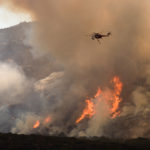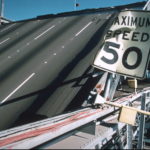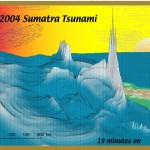
Volcanic mud bubbles near Krafla, Iceland. Credit: Theo Crazzolara
On May 26, 2006, an unusual volcano sputtered to life in Sidoarjo, Indonesia. Instead of spewing ash or lava, the volcano, known as Lusi, spits globs of mud high into the air. 11 years have gone by, 60,000 people have been displaced, and 13 people have been killed. The eruption shows no signs of stopping; researchers now think they know why.
According to a study published online on Oct. 28 in the Journal of Geophysical Research: Solid Earth, researchers say they have discovered a source of magma, fed by a nearby volcano, that is heating Lusi from below.
While other mud volcanoes roil in Azerbaijan and the Caribbean, the circumstances surrounding Lusi’s eruption are unique.
The recent article is the latest development in a decade-long academic tussle about the cause of the eruption. Two camps of scientists exist: one that believes the eruption was caused by a naturally occurring eruption, and one that believes that negligent drilling practices opened up a fault near Lusi’s eruption site.
Additionally, Lusi has produced the longest mud eruption ever witnessed. According to study author Adriano Mazzini, a geophysicist at the Center for Earth Evolution and Dynamics at the University of Oslo in Norway, one of the other defining characteristics of Lusi’s eruption is its proposed connection to nearby series of volcanoes called Arjuno-Welirang.
In a technique called ambient noise tomography, Mazzini and his team used a network of 31 seismometers to measure how quickly seismic waves bounced off of different types of earth. These waves bounce off of solid rock, magma, and hydrothermal fluids in different ways, and create their own unique signatures. Consider it an MRI for the Earth. Using this data, Mazzini says they were able to construct a profile of a tube that connects a large reservoir of magma underneath Arjuno-Welirang to the heated water source underneath Lusi.
“We demonstrate that the two systems are connected,” says Mazzini. “The volcanic complex is continuously feeding Lusi and providing fluids.”
Mark Tingay, who is a petroleum industry consultant as well as an adjunct professor at the University of Adelaide in the Australian School of Petroleum, objects to the methods used in Mazzini’s research.
“There’s dozens and dozens of seismic profiles of that area” that “are far more capable of picking up a magmatic body,” says Tingay, “but they don’t show any magmatic body.” In essence, Tingay says there’s a wealth of higher resolution data available that doesn’t show the tube of magma documented in Mazzini’s paper.
Mazzini disagrees, noting that even though Lusi’s eruption is unique, “the methodology is pretty straightforward.”
This isn’t the first time that Mazzini and Tingay have been at odds with each other. Tingay and his colleagues argue that the eruption was caused by the drilling company. Mazzini contest this hypothesis, arguing that an earthquake set off the eruption. The level of destruction makes it a high stakes debate — one that could cost hundreds of millions of dollars, and have effects that span for decades.
While researchers debate the cause of the eruption, the answer to what is perhaps the most important question eludes them: When will the eruption end?
“This connection could eventually stop, and the system could seal off,” says Mazzini, “but it is difficult to predict.”
Meanwhile, the residents of Sidoarjo remain mired in mud and uncertainty.







Comments are closed.